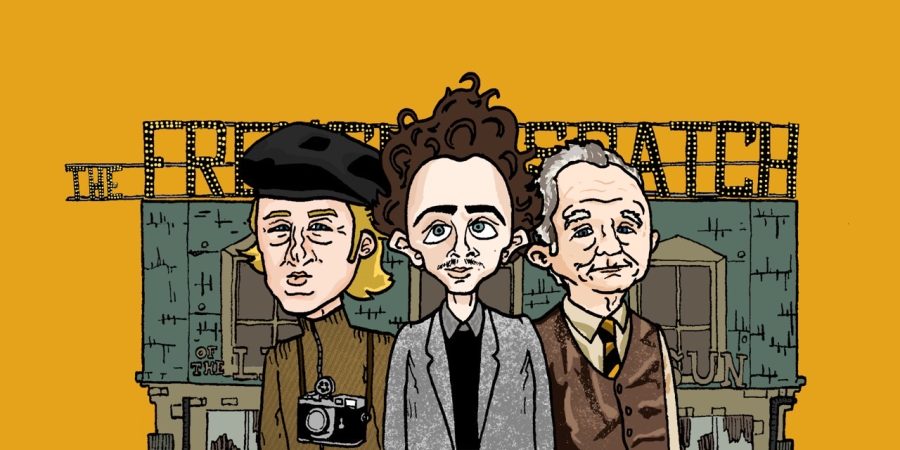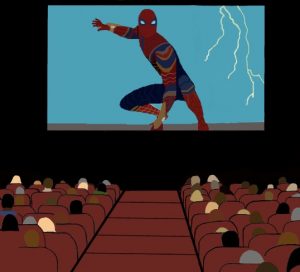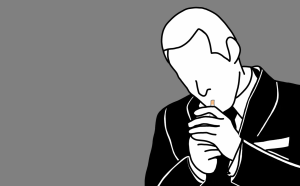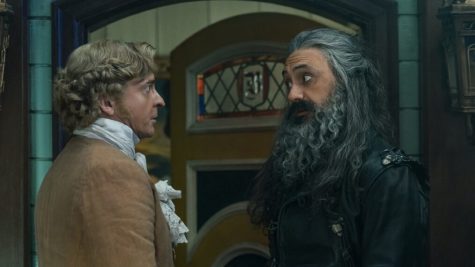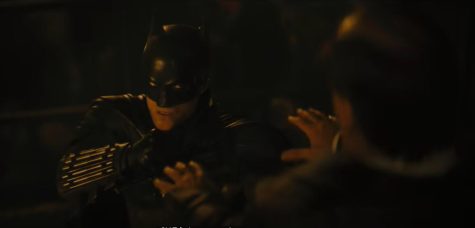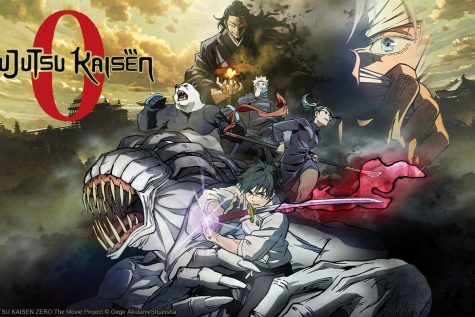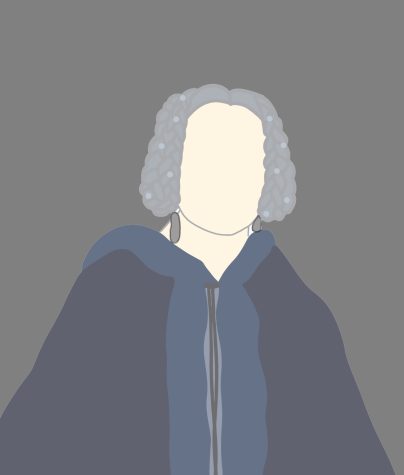‘French Dispatch’ delivers on all fronts
If you like Wes Anderson than you will love his latest movie
Herbsaint Sazerac, Zeffirelli, and Arthur Howitzer Jr. (left to right), stand in front of the French Dispatch building.
The French Dispatch, written and directed by Wes Anderson, is a film about a small American newspaper set in a French city. Anderson, just as he has done with many of his previous films, did a wonderful job of composing all the elements of a great film. It’s one of the most visually appealing films we have had the privilege of seeing. The film is a collection of three fictional stories written and narrated by journalists of the paper.
The editor of the paper, Arthur Howitzer Jr., (Bill Murray), is reminiscent of our very own Mr. Winter, overseeing the print with a watchful eye, listening and making critiques to the stories of the young journalists.
The cast list doesn’t end there, including Owen Wilson, Timothée Chalamet, Léa Seydoux, Benicio del Toro, and other notable actors.
Many other movies or shows with star-studded casts don’t live up to the lofty expectations that are given to them upon release. The French Dispatch however, does a fabulous job of bringing all these actors together and giving them all a perfect role.
Owen Wilson plays a small role as a biking journalist. Timothée Chalamet plays a role as a young rebel chess player. Léa Seydoux plays an emotionless prison guard tending to Benicio del Toro’s character as a stubborn but timid imprisoned painter.
All of these roles, as well as those played by the other characters in the film, seem perfect for each actor.
Even the introduction, which shows Herbsaint Sazerac, played by Owen Wilson biking around the city of Ennui-sur-Blasé, is a perfectly played role. Wilson speaks to the camera about the history of the Dispatch, as well as the history of the city it resides in, and how little has changed since it got its start. Wilson plays the part very well, always either looking into the camera or obviously completely ignoring its existence. The most notable part of Sazerac’s character is how Wilson delivers his lines. The viewer can tell he’s reading off a script, or telling a story, but it’s still wonderfully acted, in a way that gives the viewer the feeling of watching a play instead of a film.
As the film goes on, it becomes apparent that this is exactly how Wes Anderson intended the film to be viewed, like a play. The roles and lines are dramatically acted out, the background of scenes can sometimes be seen being changed by figures rushing around in black suits, even the scenes themselves often look like they have been made out of cardboard by a tech theatre crew behind a curtain.
This is very true to Anderson’s style, as many of his other films follow the same style of cinematography. Over the years he has mastered the use of bright colors, beautifully placed symmetry and precise camera work to be considered one of the better directors in the industry.
This film is no different, and neither are the three stories that the film revolves around.
Each of the three stories centers around one character, each one played beautifully. In “The Concrete Masterpiece,” the first of the stories, that character is Moses Rosenthaler (del Toro). Rosenthaler is an imprisoned artist caught up in his discovery of a new love for his painting as well as one of his prison guards, Simone (Seydoux). When a greedy art dealer Julian Cazadio (Adrien Brody) falls in love with Rosenthaler’s art style, he is faced with the tough decision of how to handle his new talents.
Anderson’s style really comes to life in this story. Fight scenes are frozen in time as one character considers his surroundings, deciding how to escape the madness. A plane with half its hull cut out so the inside happenings can be seen clearly flying above fake clouds in front of a blue wallpaper. The use of contrast between black and white and color schemes to show past, future, and different feelings is very visually appealing.
In “Revisions to a Manifesto,” the second story, Timothée Chalamet plays the central character, Zeffirelli. In a very classic Chalamet role, he plays a young feisty abolitionist who acts in a dramatic seriousness, battling between what he believes is his love of two opposing characters while at the same time fighting off the government in an intense chess match.
The way the crowd of young kids watches on as the chess match of their lives unfolds, and then turns to chaos when the awaiting militia becomes impatient with their games, is portrayed extremely well. Through clouds of smoke and scrambling kids, Anderson’s style stays true as Chalamet and his chosen love interest scurry through to find a scooter with which to elope.
The third and final story, “The Private Dining Room of the Police Commissioner” is possibly the most intricate story of the three. It is a retelling of a story about the kidnapping of the Commissioner’s son and the fight to get him back. It is told by Roebuck Wright during a live television interview. Wright was present on the day of the kidnapping, and tells the interviewer how the day went down straight from memory.
During this last story, the use of cartoon animation is the most recognizable tool used by Anderson. During a police chase towards the end of the story, the film switches to cartoons. This allows the film to be even more dramatic, as the cars rush through the tight, winding roads, and the windshields smash as they come to a halting stop in front of a ledge at the end of the chase.
At the end of the film, the only negative we found was that it felt like it had dragged on too long. After the final story, we were really hoping there wasn’t another one coming up.
That said, it was a very enjoyable film overall. Anyone who enjoys Wes Anderson and his art style would love this film. It was very visually appealing and each story was interesting to watch and listen to.
Oliver gave the film an 8/10. Thomas gave the film an 8.6/10.



